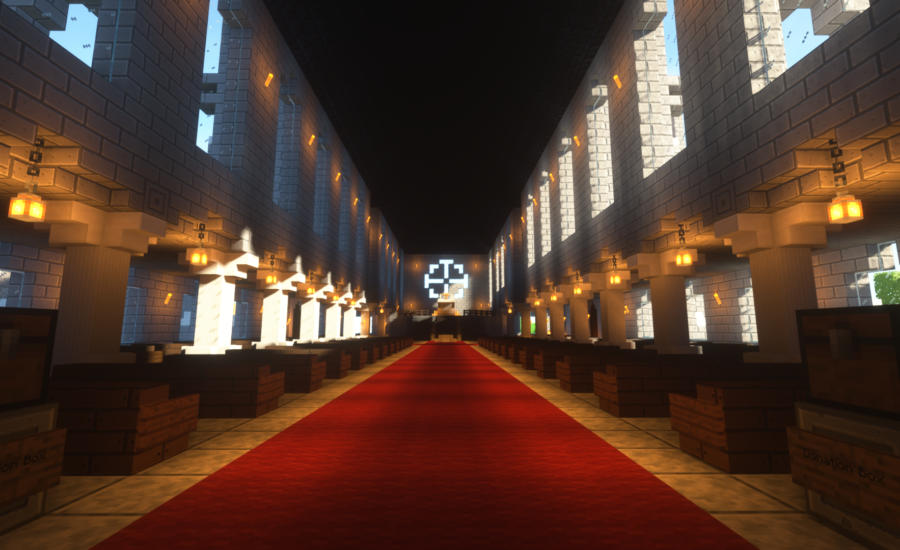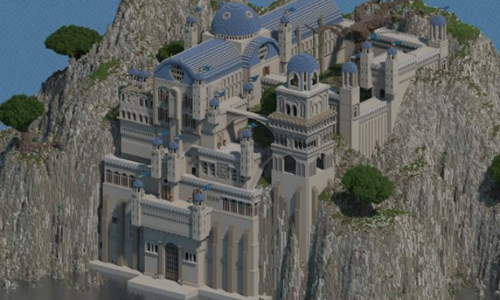Salt and Sanctuary is an action-rpg platformer that owes a great deal to Castlevania: Symphony of the Night, Dust, the Dark Souls series, Bloodborne, Phantasy Star Online 2, and Final Fantasy 10. S&S, like certain characters in its story, is envious. It grasps, it clutches, it steals whatever it can get its hands on, trying desperately to become the one thing it can never be. But I found as the initial impressions (“Jesus Christ this is exactly Dark Souls wow they’re not even trying to hide it”) wore off, I was surprised at just how much the game actually stands on its own.
The surface mechanics of S&S are stolen from a few key sources. From Dark Souls, it takes covenants, the style of item usage, much of its UI, stamina-dependent combat with parrying, heavy hits and stunlocking, as well as many of its general area concepts. It even goes so far as to crib smaller details, such as letting the player wear 4 rings and giving many enemies tracking attacks, ala Dark Souls 2, right alongside the larger ones, such as needing to retrieve your souls, er, salt, from where you died. From Bloodborne, we have certain mechanics revolving around offhand weapons, boss enrages below certain health thresholds, enemies themselves taking your salt rather than it simply dropping somewhere (unless you die from a fall), and quite a few enemy designs. From Dust and SoTN, it takes much of its platforming and some later area designs. From FF10, it takes the sphere grid. From PSO2, it takes its style of equipping and utilizing spells and incantations. And if all you saw were screenshots, or if you only heard about the game without playing it through, you might be forgiven for thinking it’s a total rip-off in every way.
What I found as I played through it to completion, however, was that S&S is more than the sum of its black market body parts. To start at the surface: It does several things differently on a mechanical level from Dark Souls. Magic in particular, I found very interesting. Though you start with a ring equipped (if you start as a mage) that nullifies this effect, you have to be mindful of elemental imbalance that accrues and eventually hurts you if you cast too many of the same element’s spells in a row. I also like how your secondary resource, Focus, caps your maximum stamina as you burn through it, forcing you to choose carefully when to use magic, and presenting some interesting challenges for hybrid builds. Magic feels satisfying and fun to use, growing more and more powerful as you progress until you can rely on it for every encounter with the right “pure mage” build, without feeling so crazy overpowered that it removes all challenge, like sorcery can be in Dark Souls 1.
I also appreciated the balance the game strikes between Dark Souls’ surfeit of similar weapons, and Bloodborne’s dearth of wildly different ones. Most of the weapons I ended up using, I got not from the world or from NPC vendors, but via alchemy, a system similar to boss soul weapon smithing from Dark Souls, but with components that can come from a variety of non-boss enemies as well. As it turns out, there are a ton of different weapons you can only get this way, and a lot of them are cool as hell.
Where S&S felt a bit less balanced, to me, was in its armor selection, which felt skewed more towards “fashion souls” in the light armor category, leaving a heavy armor character with often-unusably-heavy armors that didn’t differ very much from each other, visually, except in color. This is partly due to sprite design and character proportions not giving you a good view of what you’re wearing, but where are all the fashionable heavy helms, for instance? And you need an insane amount of Endurance to wear anything with half-decent damage mitigation.
Dark Souls is known for telling its story obliquely, through item descriptions and such. Salt and Sanctuary, however, I found to have a pretty straightforward story, told mostly through NPC dialogue. There’s a ton of flavor text in item descriptions and on the sphere grid, sorry, Tree of Skill. But I found most of it to be just kinda… there. It doesn’t seem to point to any kind of coherent central narrative, but rather serves to flesh out the multitude of nations and stories that seem to exist (or that we’re meant to think exist… somehow, I doubt much has been written beyond these short blurbs) in the “S&S universe”. But to be honest, maybe I’m over-exposed to this sort of thing by now, but nothing really stood out to me in the writing of this stuff. I found it all pretty bland and easily skipped over. That said, the main story that S&S tells is actually a pretty interesting one, if a bit simple in the end. It has a compelling hook, some interesting windings (I can’t really call them twists per se), and a satisfying conclusion with a choice of endings. In any case, the main draw here is the gameplay, which is excellent.
I appreciate the separation of gold and salt into two different currencies, while keeping salt the primary resource for character improvement via blacksmithing, alchemy, and leveling up. This means gold becomes more of your “noob support” currency, letting the player spend it freely on usable items and some early-game special armors and weapons, letting you get a bit of a leg up at first and recover more easily from large salt losses. Gold, though, doesn’t seem to have too many uses in the late game. Mostly, it just goes down the toilet when you die, thousands at a time. I started just buying 99 bags of salt at a time near the end, and sitting there mashing RB for a relatively quick 9900 salt, just to get the gold spent somehow. But that’s tedious as hell, so I stopped doing it and just let it waste away to pay the cleric who revives you. My theory is that Patches is from this universe, and this is why he hates clerics so much.
I really like how your levelups are separated from your skill tree, how the skill tree is laid out, and how the presence of a limited-use item to respec a single skill point gives you some choices to make when building your character. What’s not immediately apparent is that you can put more than one point into the stat-boosting spheres on the tree. Though, this isn’t terribly useful on NG, I found. It’s better to rush to the sphere corresponding to the tiers of equipment you want to use. And since I finished the game at level 81 my first time through, using a tier 4 greatsword and some tier 4 heavy armor pieces, I didn’t really have enough skill points to start stacking stat-ups.
While the visual design takes a lot of its cues from other games as far as general concepts go, I found the atmosphere of S&S to be well within bounds of being its own thing. World feel and atmosphere are done very well in this game. It especially starts ramping up towards the second half, once you’re into and beyond the Castle of Storms. There’s some really cool stuff there!
Movement and combat feels good. I especially enjoyed some of the brands you get that change your movement around in unexpected ways for a game that feels like this. Those little dashes of SoTN were a great and welcome addition. The first brand you get, though, is particularly cool. I’m not even going to say what it is, just cause I don’t wanna be the one to spoil it for you if somehow you don’t know. And it influences level design in later areas in some really clever ways.
All in all, Salt and Sanctuary is very much worth your time. It’s an extremely enjoyable and high quality game. My first playthrough took me about 18 hours, and I know I missed a ton of stuff, especially in the last third when I was just kinda blowing through it not exploring too much due to the difficulty of a lot of the enemies. I’m very much looking forward to finishing my mage playthrough, and I already have a Bloodborne beast hunter and a thief waiting in the wings. Good stuff!




